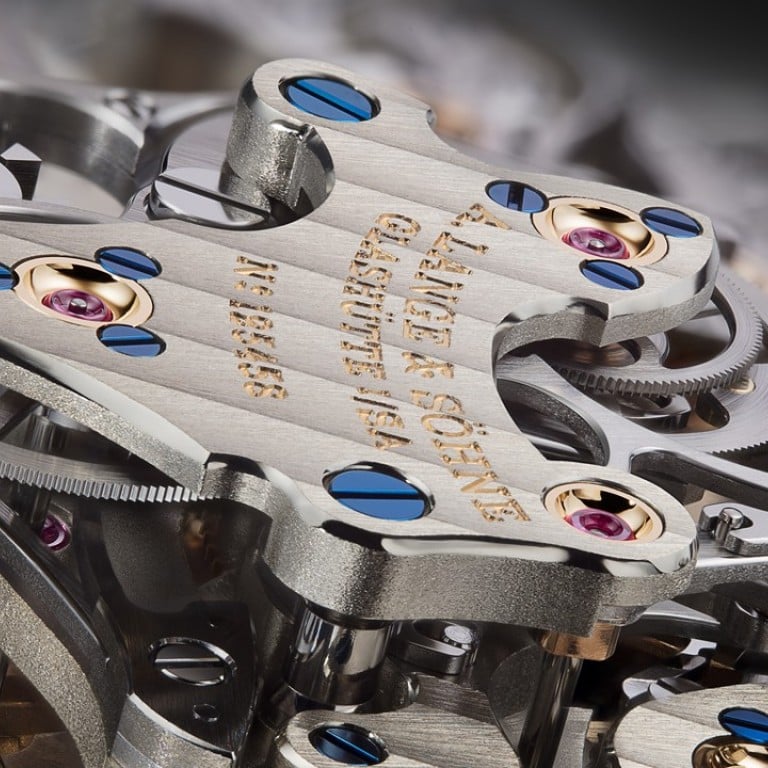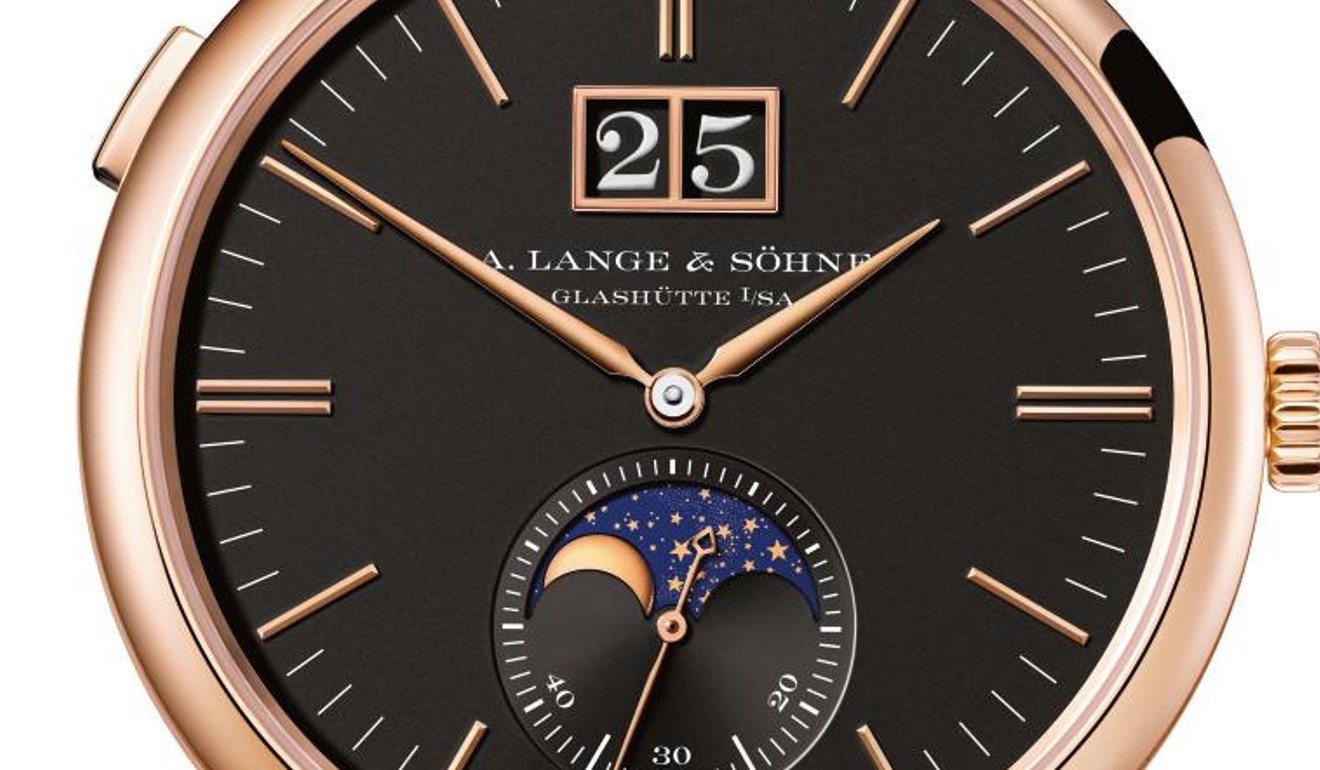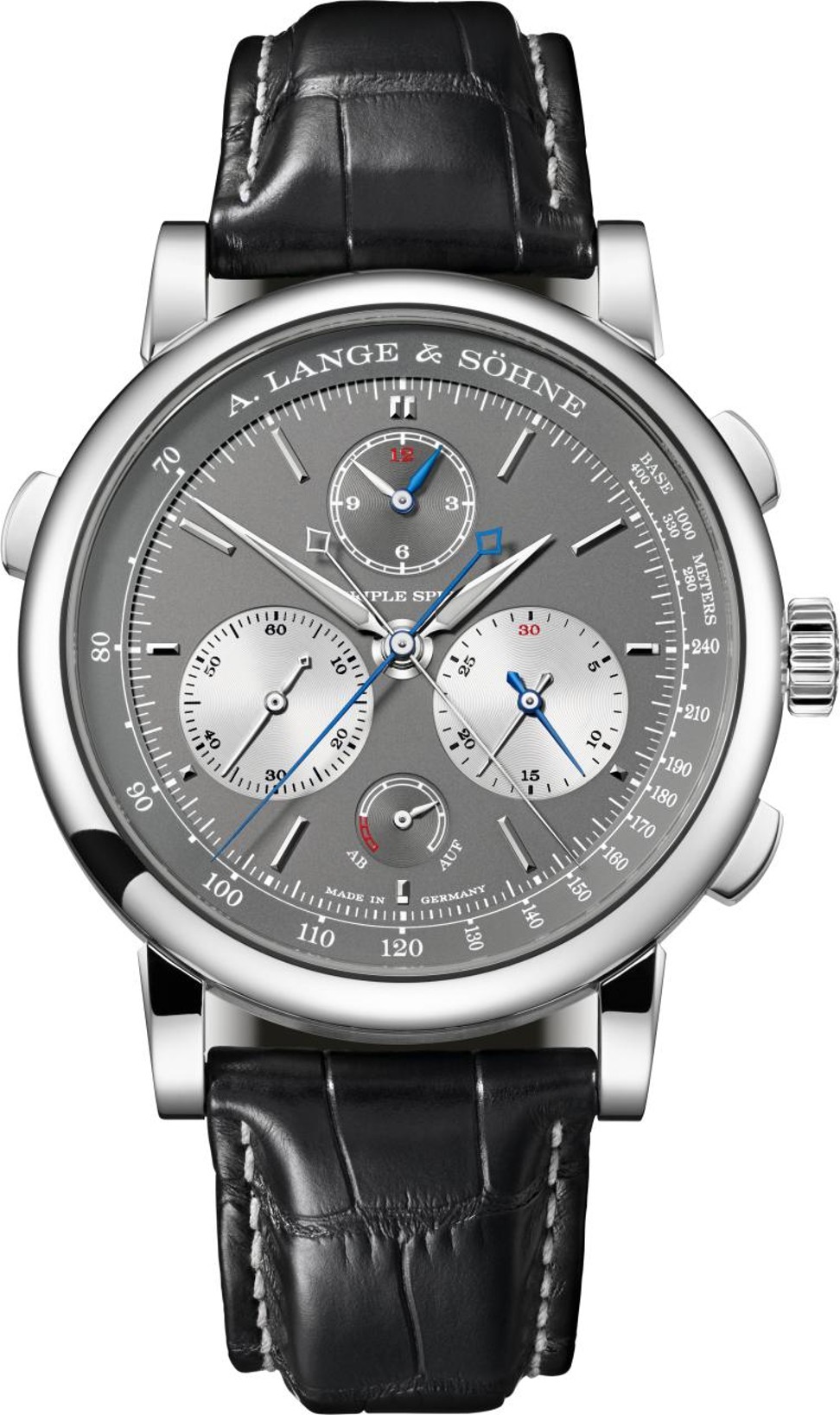SIHH 2018: A. Lange & Söhne’s Triple Split lifts rattrapante complication to new heights

Timing is everything. No watchmaker knows this better than A. Lange & Söhne, masters of the split-second chronograph, or rattrapante, which has taken the complication to new heights.
Realising the split-second function is difficult – timing must start at the same instant for, say, two runners in the same race who will obviously have different finishing times. The first runner finishes and the push piece stops the hand for the time to be recorded. The push piece is pressed again and the hand catches up to continue timing the second runner.
The seconds, minute and hour hands are activated simultaneously, with the rattrapante blued steel hands stopped by the push piece to measure lap times while the rhodium chronograph hands continue to run. Pressing the push piece again causes the stopped hands to reactivate and catch up with the running hands.
Only 100 Triple Split chronographs will be released, in a 43.2mm white gold case with grey dial.
In a poignant tribute to founder Walter Lange, who died in January 2017, A. Lange & Söhne has created four new
1815 models with an interesting complication, fittingly titled 1815 “Homage to Walter Lange”. The calibre is known as L1924, Lange’s birth year and the first three digits of the reference number are his date of birth, 297.
Among these references is a unique piece, to be auctioned off for charity. In a departure from A. Lange & Sohne’s usual white dial and white gold casing, this piece comes in a 40.5mm stainless case and a black enamel dial.
“When you want to do something unique, it should be something that is different. We rarely do black dials and we rarely do stainless steel, so we said, ‘why not do it for this one?’,” says brand CEO
Wilhelm Schmid.
Another eminent Lange, Ferdinand Adolph, invented the stoppable jumping seconds hand, which allows the precise measurement, 150 years ago. The blued seconds hand jumps from second to second and can be stopped using a push piece at 2 o’clock.
The jumping seconds complication has now been incorporated into three limited edition pieces in white (145 units), yellow (27 units) and rose gold (90 units), numbers which are significant in the history of the manufacture, and a one-of-a-kind model in stainless steel.
The 1815 collection has also been enlarged by two chronographs in rose gold with black or silver dials, featuring column-wheel control, flyback function and a pulsometer scale.

Saxonia Outsize Date in white or rose gold has the large date discs, for the first time in black, centred in a black galvanised solid silver face in a classic design. Like the Outsize Date, Saxonia Moon Phase is powered by L086.5 and is now offered with a black dial, with the outsize date apertures top centre, balanced by the moon phase disc at 6 o’clock. Be warned: adjustment is required every 122 years.
Want more stories like this? Sign up here . Follow STYLE on Facebook , Instagram and Twitter

In poignant tribute to founder Walter Lange, who died in 2017, brand creates four new models titled 1815 ‘Homage to Walter Lange’



